Anti-Submarine Warfare Market Size
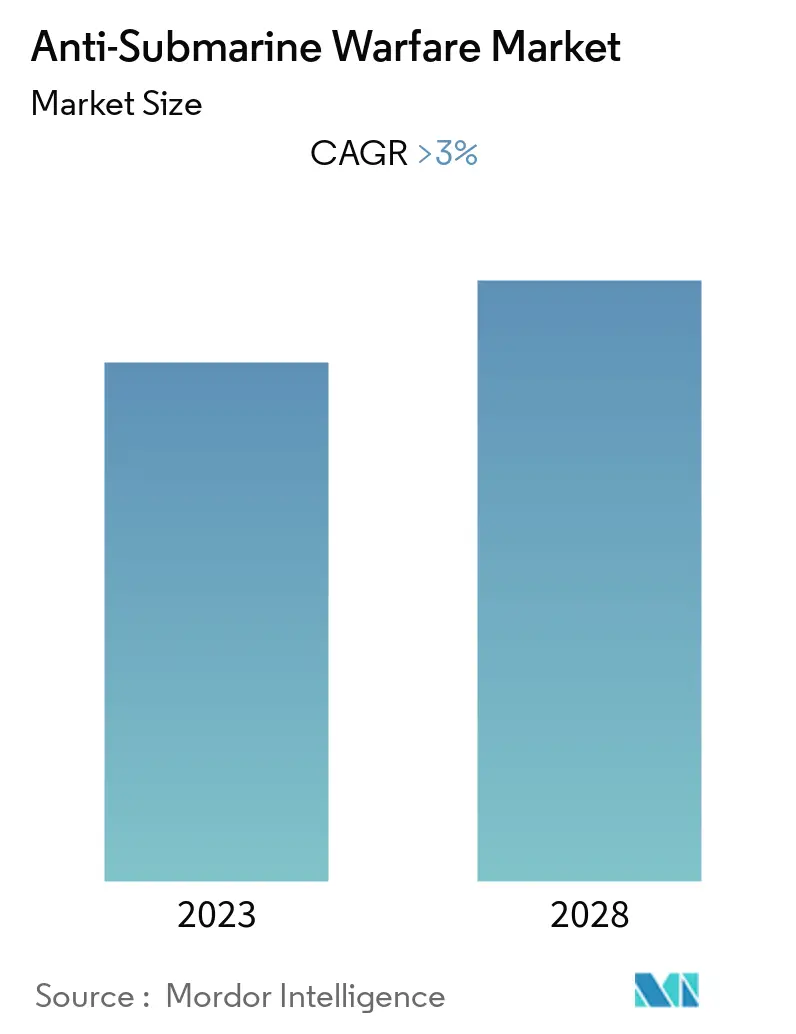
| Study Period | 2018 - 2028 |
| Base Year For Estimation | 2021 |
| Forecast Data Period | 2024 - 2028 |
| CAGR | > 3.00 % |
| Fastest Growing Market | Asia Pacific |
| Largest Market | North America |
Major Players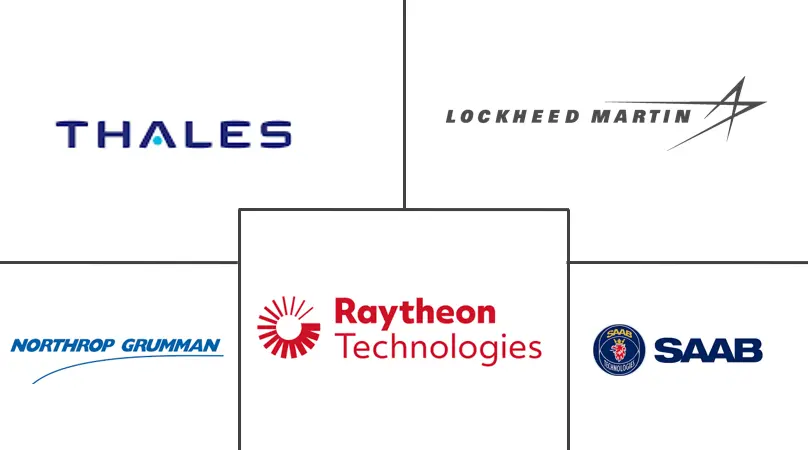
*Disclaimer: Major Players sorted in no particular order |
Need a report that reflects how COVID-19 has impacted this market and its growth?
Anti-Submarine Warfare Market Analysis
The anti-submarine warfare market is projected to register a CAGR of over 3% during the forecast period.
- Anti-submarine warfare is critical for protecting the strategic speed and operational agility of naval forces around the world, as the proliferation of new technologies is dramatically affecting the operational planning and execution of missions of both friendly and hostile forces.
- With counter- and anti-denial strategies evolving as a crucial part of implemented maritime strategies of key naval forces, anti-submarine warfare has become vital in protecting maritime assets against a swift, stealthy attack from hostile forces operating below the surface of the water.
- The ongoing R&D toward the development of advanced maritime technologies, such as stealth submarines and unmanned marine systems, is envisioned to inspire potential investments in developing countermeasures, such as enhanced range-sonar systems, that can detect stealth submarines and other immersed hostile craft.
Anti-Submarine Warfare Market Trends
This section covers the major market trends shaping the Anti-Submarine Warfare Market according to our research experts:
Modernization of Maritime Fleet Fostering the Market Growth
As modern sonars detect submarines with only a fraction of their usual range, they require radar and other visual aids to effectively detect and track submarines. Since the early 2000s, the concept of full-spectrum anti-submarine warfare was developed by the US Navy. The concept relies on aircraft, ships, and submarines for sensing, tracking, and attacking enemy submarines violating the international maritime borders in disputed territories. Military powerhouses, such as the United States, the United Kingdom, China, and India, are focused on augmenting their naval firepower, and several fleet modernization and procurement contracts are underway to address the evolving threats to their national security. For instance, in March 2019, the United States expedited its plans to achieve a proposed 355-ship fleet. The new plans outlined a rough annual expenditure of USD 40 billion for fleet maintenance. According to its 30-year shipbuilding plan, the US envisions to procure 55 new ships to achieve an effective fleet-size of 314 ships by 2024. The Russian Navy is actively inducting new vessels to its fleet. In April 2019, the Russian Navy initiated the construction of two Admiral Gorshkov-class (Project 22350) guided-missile frigates, namely, the future Admiral Amelkoand Admiral Chichagov, at the Severnaya Verfshipyard in St. Petersburg. These are multi-purpose platforms designed for anti-air, anti-surface, and anti-submarine warfare operations. The principal armament of the class consists stand-off anti-ship and land-attack cruise missiles. As of August 2019, the Admiral Kasatonov entered the final stage of shipbuilder trials. Several new vessels are scheduled for induction into active service during the forecast period, including the Admiral Kasatonov and two Project 22350 frigates, which are scheduled for commission in 2019 and 2020, respectively. Similar induction programs are envisioned to drive the anti-submarine warfare market during the forecast period.
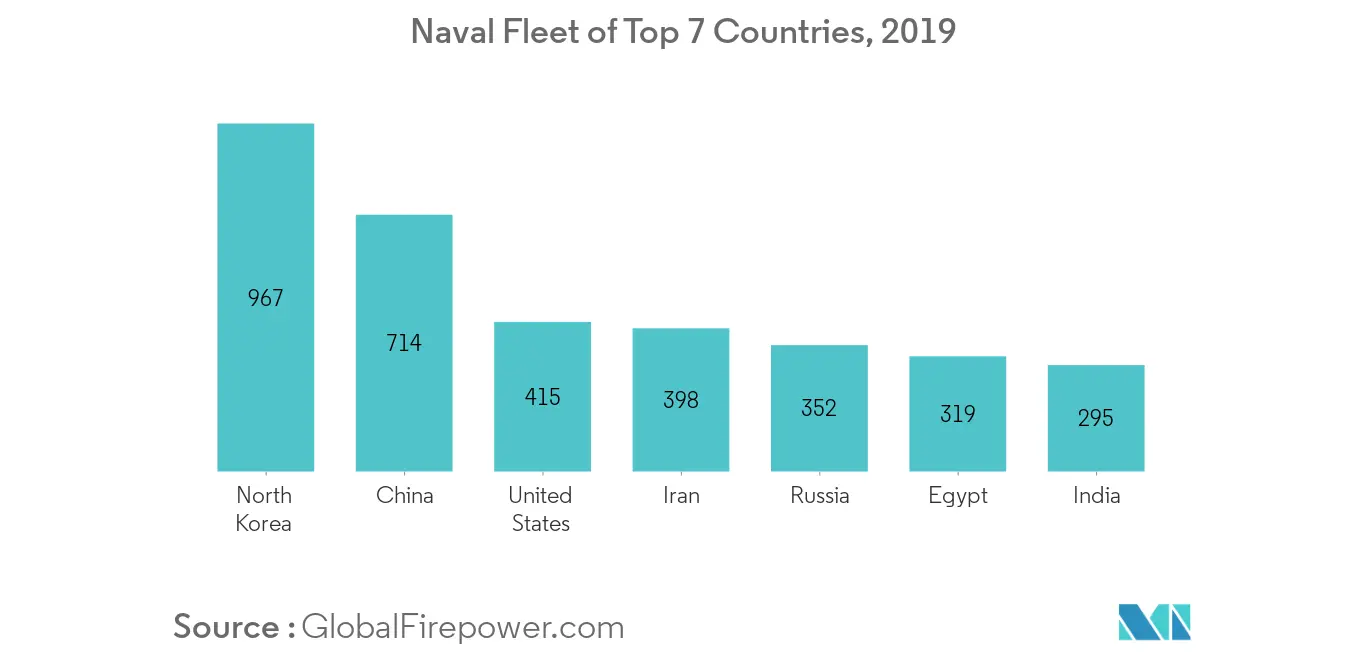
Asia-Pacific to Witness Highest Growth During the Forecast Period
The strengthening of the strategic military alliances between the United States and several Asia-Pacific sovereign nations and subsequent reinforcement of military deployment and intervention has resulted in a complex scenario, urging rapid modernization of defense capabilities of regional countries, such as China, to safeguard their vested interests. China has invested its vast technological prowess toward the indigenous development of several weapon systems to foster its military prowess over all three dominion – land, air, and water. By the mid-2020s, China aims to induct the Type 093B SHANG-class guided-missile nuclear attack submarine. During the 2017-2018, China launched the first of its four RENHAI-class guided-missile cruisers. RENHAI is scheduled to be inducted into active service by 2019, and it can carry a large load out of anti-ship cruise missiles (ASCMs), SAMs, and anti-submarine weapons. The Indian Navy is scheduled to receive the third Scorpene submarine by the end of 2020 and the last of the initial six submarines by 2028. Besides, India has also launched the Project 75i (P75i) to acquire six additional submarines. In January 2020, the Indian government announced the selection of the domestic and foreign shipbuilding firms for the construction of six diesel-electric submarines with air-independent propulsion technology as part of an effort worth more than USD 7 billion. Australia also envisions to boost its submarine fleet with the induction of six Barracuda class submarines based on the Scorpene-class. In March 2016, the Naval Group was awarded an initial order for the Barracuda class submarines under the SEA 1000 program. Several other programs are underway in the region, bolstering the growth prospects of the market in focus during the forecast period.
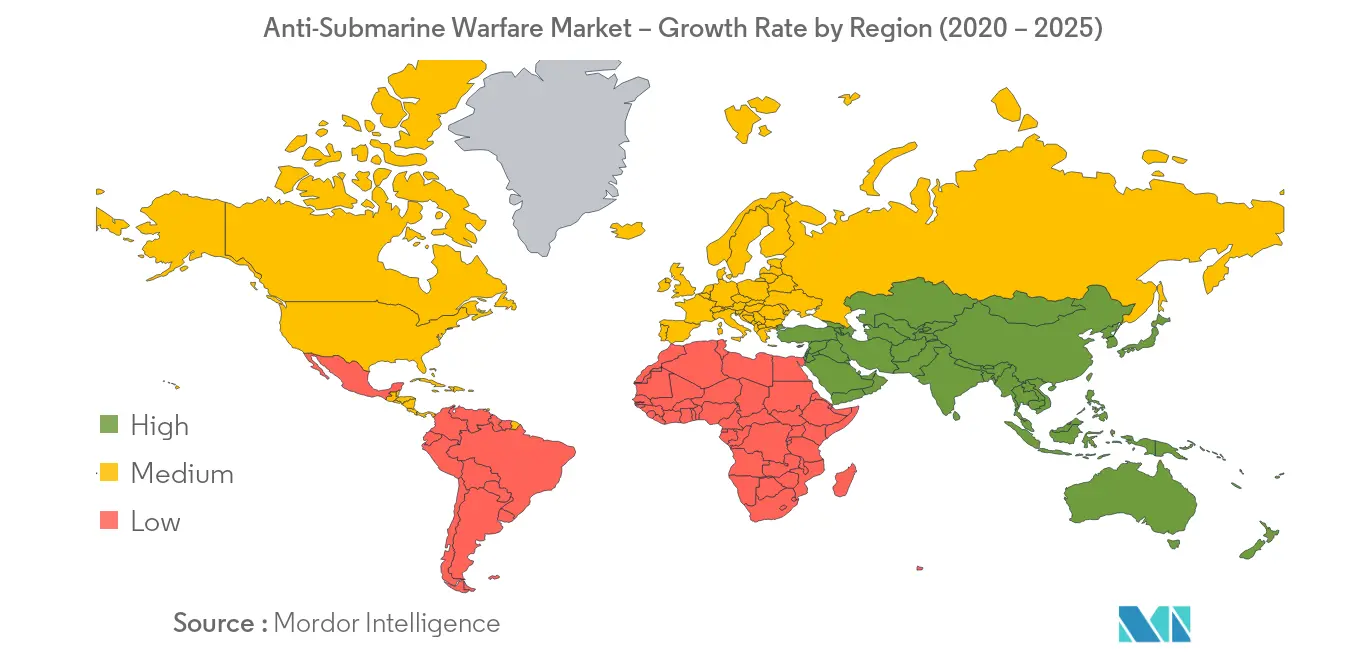
Anti-Submarine Warfare Industry Overview
The anti-submarine warfare market is fragmented, with many global players present in the market. Some of the prominent players in the market are Lockheed Martin Corporation, Raytheon Technologies Corporation, Northrop Grumman Corporation, L3Harris Technologies Inc., BAE Systems PLC, Saab AB, Safran SA, and Thales Group. In order to gain long-term contracts and expand their global presence, players are investing significantly toward the procurement of new naval assets. Furthermore, continuous R&D is fostering the advancements in accuracy and efficiency of integrated weapon technologies and associated products and solutions of naval combat systems, with anti-submarine warfare capabilities.
Anti-Submarine Warfare Market Leaders
Lockheed Martin Corporation
Raytheon Technologies Corporation
Northrop Grumman Corporation
Saab AB
Thales Group
*Disclaimer: Major Players sorted in no particular order
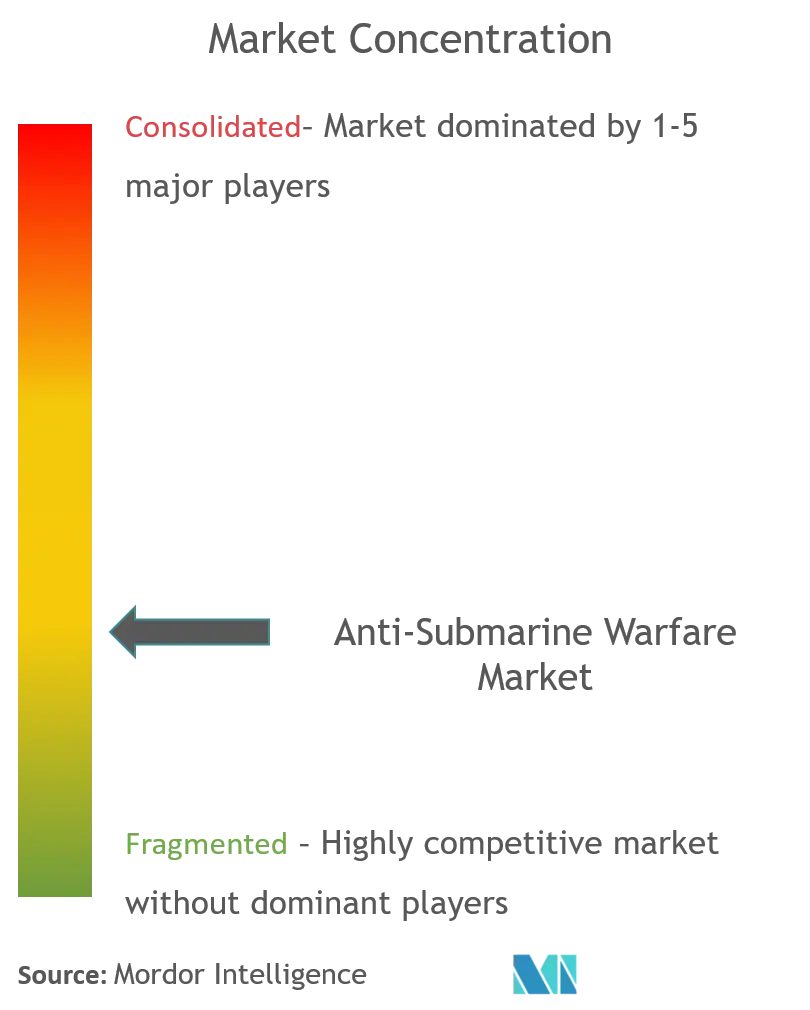
Anti-Submarine Warfare Market News
In March 2021, U.S. navy announced deployment of unmanned surface vessels by 2022 for deep contested waters far in front of crewed ships to hunt mines, monitoring Chinese ships and submarines, and launch ship-killing missiles.
Anti-Submarine Warfare Market Report - Table of Contents
1. INTRODUCTION
1.1 Study Assumptions
1.2 Scope of the Study
2. RESEARCH METHODOLOGY
3. EXECUTIVE SUMMARY
4. MARKET DYNAMICS
4.1 Market Overview
4.2 Market Drivers
4.3 Market Restraints
4.4 Porters Five Forces Analysis
4.4.1 Threat of New Entrants
4.4.2 Bargaining Power of Buyers/Consumers
4.4.3 Bargaining Power of Suppliers
4.4.4 Threat of Substitute Products
4.4.5 Intensity of Competitive Rivalry
5. MARKET SEGMENTATION
5.1 System
5.1.1 Sensors
5.1.2 Electronic Support Measures
5.1.3 Armament
5.2 Platform
5.2.1 Submarines
5.2.2 Surface Ships
5.2.3 Helicopters
5.2.4 Maritime Patrol Aircraft
5.2.5 Unmanned Systems
5.3 Geography
5.3.1 North America
5.3.1.1 United States
5.3.1.2 Canada
5.3.2 Europe
5.3.2.1 United Kingdom
5.3.2.2 France
5.3.2.3 Germany
5.3.2.4 Russia
5.3.2.5 Rest of Europe
5.3.3 Asia-Pacific
5.3.3.1 China
5.3.3.2 India
5.3.3.3 Japan
5.3.3.4 Australia
5.3.3.5 South Korea
5.3.3.6 Rest of Asia-Pacific
5.3.4 Rest of World
6. COMPETITIVE LANDSCAPE
6.1 Vendor Market Share
6.2 Company Profiles
6.2.1 BAE Systems PLC
6.2.2 Lockheed Martin Corporation
6.2.3 Raytheon Technologies Corporation
6.2.4 Thales Group
6.2.5 General Dynamics Corporation
6.2.6 Saab AB
6.2.7 L3Harris Technologies Inc.
6.2.8 Northrop Grumman Corporation
6.2.9 Safran SA
6.2.10 Elbit Systems Ltd
6.2.11 Kongsberg Gruppen ASA
6.2.12 Terma A/S
7. MARKET OPPORTUNITIES AND FUTURE TRENDS
Anti-Submarine Warfare Industry Segmentation
The anti-submarine warfare market encompasses the traditional aspects of defense forces categorization, including the procurement, upgrade, and modernization plans for naval assets with anti-submarine warfare capabilities for enhancing the prowess of the global maritime forces. The study assimilates data from annual defense budget allocations of various countries to develop a comprehensively detailed overview of the current naval defense capabilities of the countries. Furthermore, the study also analyzes emerging trends, such as Network-Centric Warfare (NCW), which is the development of joint-strike capabilities that can promote the rapid adoption of advanced naval combat systems for detecting, tracking, and neutralizing modern threats. The report also includes an overview of the efforts divested by various countries toward enhancing their defense capabilities against evolving weaponry systems, such as stealth submarines and unmanned marine vessels.
| System | |
| Sensors | |
| Electronic Support Measures | |
| Armament |
| Platform | |
| Submarines | |
| Surface Ships | |
| Helicopters | |
| Maritime Patrol Aircraft | |
| Unmanned Systems |
| Geography | ||||||||
| ||||||||
| ||||||||
| ||||||||
| Rest of World |
Anti-Submarine Warfare Market Research FAQs
What is the current Anti-Submarine Warfare Market size?
The Anti-Submarine Warfare Market is projected to register a CAGR of greater than 3% during the forecast period (2023-2028).
Who are the key players in Anti-Submarine Warfare Market?
Lockheed Martin Corporation, Raytheon Technologies Corporation, Northrop Grumman Corporation, Saab AB and Thales Group are the major companies operating in the Anti-Submarine Warfare Market.
Which is the fastest growing region in Anti-Submarine Warfare Market?
Asia Pacific is estimated to grow at the highest CAGR over the forecast period (2023-2028).
Which region has the biggest share in Anti-Submarine Warfare Market?
In 2023, the North America accounts for the largest market share in the Anti-Submarine Warfare Market.
Anti-Submarine Warfare Industry Report
Statistics for the 2023 Anti-Submarine Warfare market share, size and revenue growth rate, created by Mordor Intelligence™ Industry Reports. Anti-Submarine Warfare analysis includes a market forecast outlook to 2028 and historical overview. Get a sample of this industry analysis as a free report PDF download.
